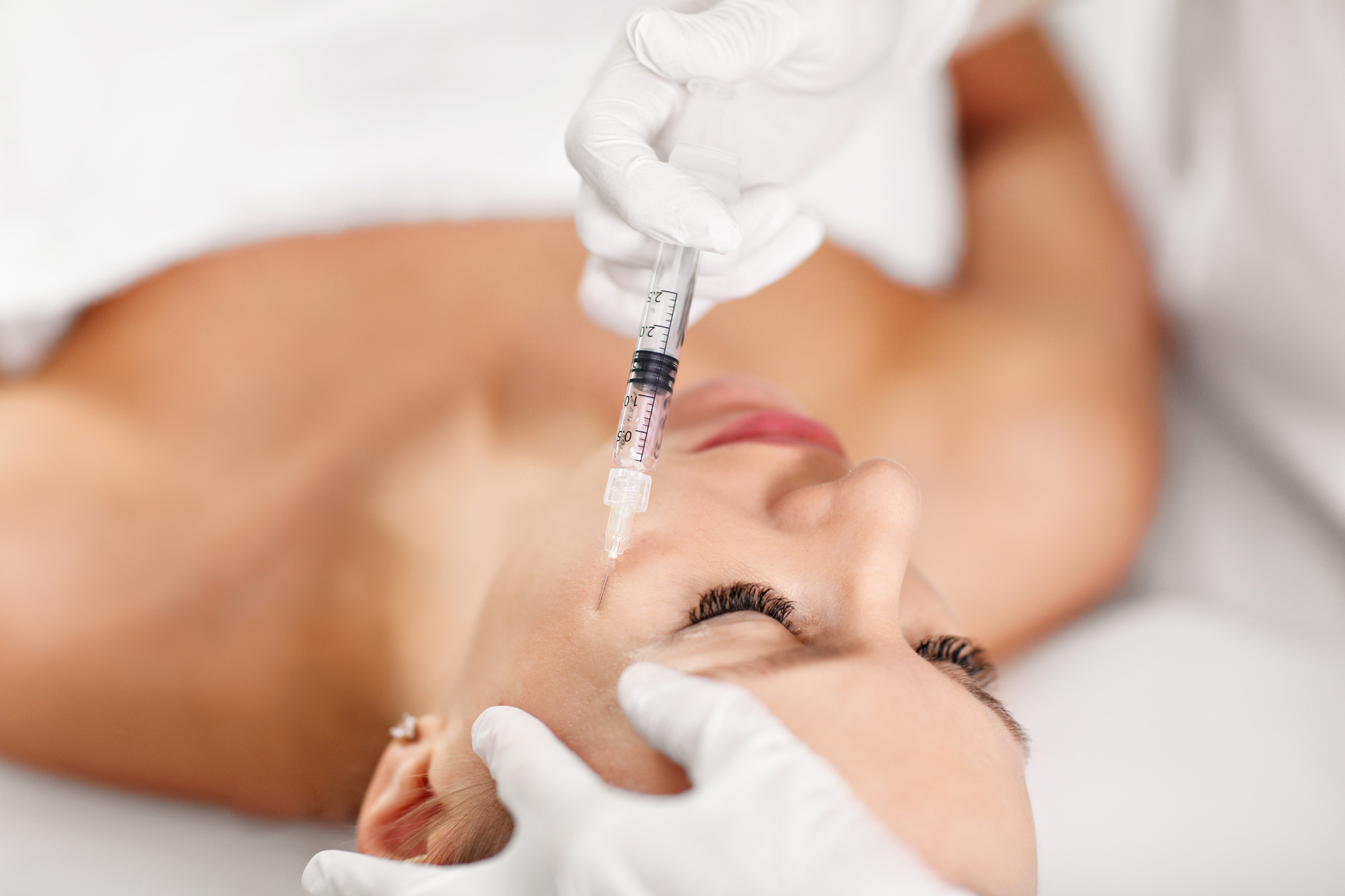What Is Cheek Filler?
When it comes to facial fillers, patients may immediately think of filling out fine lines and wrinkles and adding volume to thin lips. But filler can also be a non-invasive option to enhance and better define the cheekbone area, which can also decrease the appearance of fine line and wrinkles around the injection site.
Cheek fillers use either compounds consisting of naturally occurring substances within the body like hyaluronic acid and calcium hydroxylapatite as well as synthetic compounds like poly-L-lactic acid.
Even though cheek fillers may use different ingredients, the goal remains the same — to stimulate collagen production for natural-looking results with little downtime.
What Are the Benefits of Cheek Filler?
- Restores youthfulness to the face. Loss of fat in the cheek area can quickly show the signs of aging. Cheek filler reverses that effect by restoring volume and definition to patient’s faces immediately.
- Natural-looking results. When administered correctly, cheek filler injections should result in subtle enhancements that emphasize your natural facial structure.
- Created balanced facial structure. The cheeks, chin, nose and corner of the eyes make up facial landmarks that can give patients a symmetrical appearance. While aging can affect volume loss in the cheek area, cheek filler is a simple way for patients to define their face once again.
- Less costly alternative. Permanent solutions like fat grafts or even invasive surgery can be expensive. Cheek fillers offer patients an effective option to define their facial features, while not breaking the bank.
What Are the Treatment Options for Cheek Filler?
JUVÉDERM VOLUMA® XC:
Not only addressing the loss of facial mass that occurs due to aging, JUVÉDERM VOLUMA® XC can also treat troublesome wrinkles and “laugh lines” around the nose and mouth. JUVÉDERM VOLUMA® XC utilizes hyaluronic acid, a naturally occurring substance in the body that adds volume and elasticity and depletes as you age. The injection of hyaluronic acid not only replaces some of what has been lost, but it also increases collagen production that may have stalled.
While not an invasive procedure, some patients are uneasy about receiving injections in their facial region. However, JUVÉDERM VOLUMA® XC utilizes lidocaine in the gel treatment which reduces pain in and around the injection site.
Optimal results for JUVÉDERM VOLUMA® XC can last up to 2 years.
Restylane® Lyft:
Restylane® Lyft is similar to JUVÉDERM VOLUMA® XC in that it can also treat lines and folds around the cheek area, but it also uses hyaluronic acid to quickly amplify volume and possibly increase collagen. Lidocaine is also included in this treatment to minimize pain at the injection site.
Restylane® Lyft results can be seen up to 12 months after the initial treatment.
Sculptra® Aesthetic:
As opposed to JUVÉDERM VOLUMA® XC and Restylane® Lyft, Sculptra® Aesthetic works to gradually increase the volume around the cheekbone. Sculptra® Aesthetic uses poly-L-lactic acid, a synthetic compound that naturally dissolves in the body, to not only add definition to the cheek area, but to slowly rebuild collagen production.
Injections are administered over multiple months with results lasting up to 2 years.
RADIESSE®:
For cheek contouring and definition as well as relief for deep folds and wrinkles, RADIESSE® offers a solution that includes hydroxylapatite — a mineral found in teeth and bones, which expands and then is naturally absorbed in the body. Like Sculptra® Aesthetic, RADIESSE uses its key ingredient to not only add volume to the targeted area, but uses it to leave behind a stronger build up of collagen.
Optimal results can last at least 1 year.
Cheek Filler FAQ’s
Do cheek fillers hurt?
Some cheek filler injections include lidocaine to reduce the pain, but depending on your tolerance, there may be some discomfort. You can discuss additional pain management options with your dermatologist before and after treatment.
Is there any downtime?
Recovery time for cheek fillers is minimal, and most patients are able to return to their routine daily activities after treatment. However, your dermatologist may recommend that you avoid exercise and pressing or sleeping directly on your face for 24-48 hours after the injection.
What are the common side effects of cheek fillers?
Common side effects of cheek fillers can include redness, bruising, itching or swelling at or around the injection site. Typically, these side effects will resolve within 7 days, but your dermatologist can assist you with a reasonable estimate for your particular treatment.
Click here to find an Epiphany provider near you.

